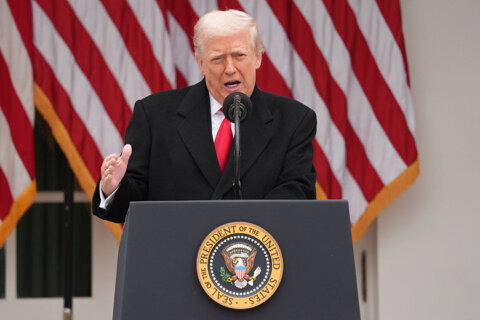As President Joe Biden’s withdrawal from Afghanistan nears completion, his administration still hasn’t finalized its policy for pursuing terrorists in the country once US troops have departed.
While the US military will retain authority to carry out strikes against the Taliban in support of Afghan forces, as CNN reported on Friday, that authority does not necessarily extend to counter-terrorism operations in the country against those suspected of planning attacks against the US homeland or allies.
For years, the CIA and US military have had broad authority to kill suspected terrorists in Afghanistan, targeting decisions that could be made by senior military and intelligence officials and did not always need final sign off by the White House.
But as Biden prepares to end the war, his National Security Council is studying whether to raise the bar for the CIA and the Pentagon to carry out deadly drone strikes and commando raids once US troops are gone, according to people familiar with the matter.
Sources tell CNN that the Biden administration is also still debating whether to remove the combat zone designation for Afghanistan — a technical distinction that in recent years has greatly impacted how freely the US uses lethal drone strikes and commando raids in a given country.
Under the Trump administration, commanders in the field were authorized to make targeting decisions under their own authority in countries like Yemen and Somalia, in addition to Afghanistan. But the Biden administration is reviewing the rules there as well, and it remains to be seen if the administration will put Afghanistan on a similar footing or implement specific criteria for terrorists there post-withdrawal.
“It makes sense that when we end our engagement in Afghanistan, we would have to apply some version of the rules that apply for everywhere else,” said Bobby Chesney, director of the Robert S. Strauss Center for International Security and Law at the University of Texas. “One way to look at it is to say this is just part and parcel of shifting away from Afghanistan as a theatre of combat operations.”
So far, the NSC deliberations — which are nested within a broader study of Pentagon and CIA authorities globally — are in early stages, officials familiar with the work tell CNN, and options have not yet been delivered to senior White House officials for final review.
That current uncertainty leaves the military and the CIA in limbo as they await updated guidance on what kind of approval they will need to launch lethal strikes after Biden declares the war to be over.
White House press secretary Jen Psaki told reporters on Wednesday that the US would continue to work with countries “that share our interest in countering the reemergence of a serious external plotting capability emanating from Afghanistan, should that emerge,” but noted that Afghan security forces would be “in the lead” following the US troop withdrawal.
Internally, CIA officials remain uncertain of what the agency’s future operations in Afghanistan will look like after the withdrawal, according to people familiar with the matter. Agency officials are closely watching the security situation on the ground as predictions about Afghanistan’s stability have become more dire over time.
“The security situation is not good right now,” Gen. Scott Miller, the top US general in Afghanistan, told reporters on Tuesday.
Lawmakers raise questions
Both Republican and Democratic lawmakers on Capitol Hill and former officials have consistently raised concerns about how the US plans to gather intelligence on and prevent potential threats to the homeland after the pullout is complete.
Rep. Andy Kim, a New Jersey Democrat on the House Armed Services Committee, told CNN this week that there have been some initial discussions between lawmakers and administration officials about how the US will conduct counter-terrorism operations in Afghanistan but he has not yet seen anything that lays out what capabilities, both covert and non-covert, will be available — and what authorities they will have.
The current NSC review is designed to answer some of those questions. The deliberations over how to empower the CIA and the military in Afghanistan highlight the delicate balancing act Biden faces in trying to “end” a war with an adversary who is still fighting — without losing the ability to conduct counter-terrorism strikes.
What parameters are ultimately imposed may signal how committed the Biden administration is about “ending America’s forever war.”
“Will we continue to do strikes against al Qaeda? Will we still have the legal right to attack the Taliban, if we do not see a direct threat emerging to the US?” asked Michael O’Hanlon, a senior fellow at The Brookings Institution specializing in defense and foreign policy issues. “That will be a judgment call for the Biden administration. It will be more of a political decision.”
Maintaining the status quo
For months, the Biden administration has been reviewing its standards for military and CIA strikes in terrorism hotspots around the globe, like Somalia and Yemen, whose status as “areas of active hostilities” has been hotly debated for years. That broader review has yet to be completed and in the meantime, the White House has been more tightly controlling the agency’s lethal operations worldwide.
If the reviews put Afghanistan under the same guidelines as non-conventional battlefields, it wouldn’t change the CIA’s legal authority to conduct strikes in Afghanistan. And the US military’s airstrike authority will also remain under the 2001 war authorization for al Qaeda and ISIS. But it could place practical limitations on the use of force there.
One option under review is to place new criteria on who the CIA can target — membership in a terrorist group like al Qaeda or ISIS would not necessarily be automatic grounds for a strike under the new policy, sources said — and the level of permission the agency would need before carrying out a strike. The new framework under consideration would require a more thorough interagency vetting process and more extensive White House involvement before the CIA conducts a lethal operation in Afghanistan.
A practical problem
The review is also being fueled by a practical reality, another source told CNN — namely, that as part of the withdrawal, the CIA will lose many if not all of the bases it has used in the past for the drone program.
That basing is necessary not only for targeted strikes, but also for intelligence, surveillance and reconnaissance efforts to support the strikes, the source said, especially since there are no American bases in any of the countries directly bordering Afghanistan.
“I’m more concerned about US capabilities than authorities,” said O’Hanlon. “I don’t think a Taliban takeover of the whole country is likely. But there will be places where the Afghan government loses access in locations it currently controls. And that will lead to some dark spots on the radar screen.”
CIA Director Bill Burns acknowledged to lawmakers earlier this year that the withdrawal will affect the CIA’s ability to collect intelligence, and national security adviser Jake Sullivan echoed that assessment in an interview with CNN in April.
“It is true as the CIA director said we won’t have the same level of presence on the ground that we did when we had 3,000 troops or 30,000 troops or 100,000 troops,” Sullivan said at the time. But he emphasized that the agency “will retain sufficient capability so that we will have months of warning before al Qaeda is able to gather again external plotting capability to threaten the homeland.”
What that capability would look like remains unclear. While there has been significant discussion by the administration about conducting “over the horizon” counter-terrorism missions from further away, those will not be nearly as effective as the current US strike capability and the resource commitment will be much more costly, said one of the sources familiar with the ongoing deliberations.
Targets in Afghanistan have also become more scarce, the sources said, and the resources required to maintain a presence and carry out those operations, particularly against more low-level actors, are no longer considered worth it by many in the administration.
“Every shot, against a high-value target or against some low-level operative, costs basically the same,” said the source familiar with the ongoing discussions.
As the administration continues to work through several logistical challenges on that front, Kim said it would make sense, as part of those deliberations, to review the criteria for how high-value targets are determined given the US will have fewer resources at its disposal.
“When you have fewer ISR capabilities and fewer strike capabilities, it’s inherently going to put strain on what they can target,” he said, referring to lethal strikes carried out by both the Pentagon and CIA.
“So they would certainly want to try to narrow that to their top priorities, to make sure that it’s being utilized in the most effective way.”







